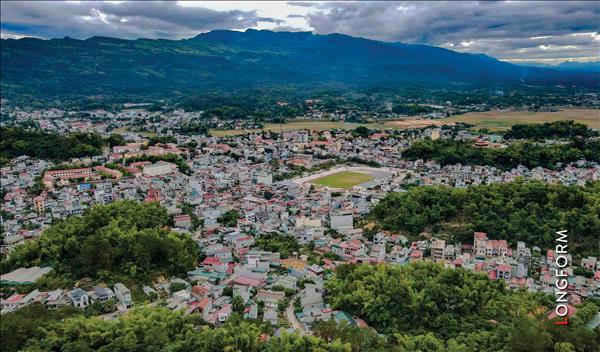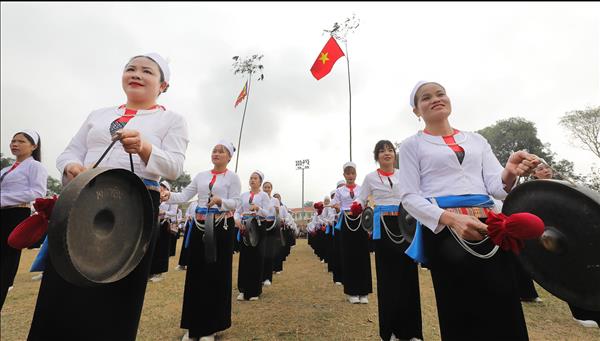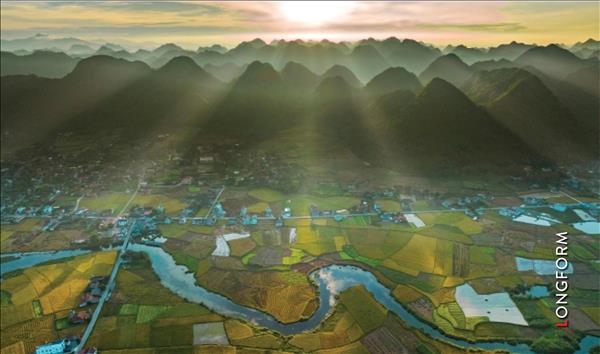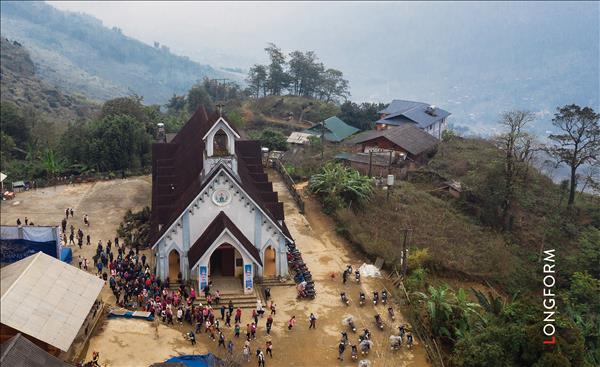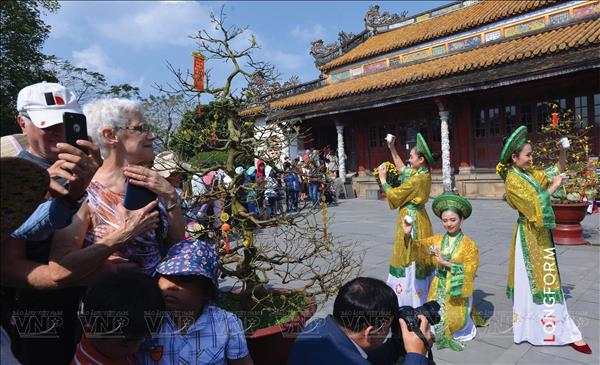Street Quarters of a distant past
Groping for the spatial boundary of ancient quarters inscribed in historical books on Hanoi, we choose to sit at the Hang Bong- Hang Gai- Cau Go street axis – the base of the ancient quarter triangle – to enjoy iced tea and let our mind drift amidst streams of nostalgic thoughts on a leisurely autumn afternoon.
Those who once sat on pavements or strolled in the space of “36 pho phuong” (36 streets and guilds) of Hanoi can realise that this is a strange city even with its structural inadequacy being a source of inspiration for many artists. Perhaps, that is why Hanoi appears in various art genres, including poetry, music and paintings, and wherever one goes, one never forgets this piece of land.
Groping for the spatial boundary of ancient quarters inscribed in historical books on Hanoi, we choose to sit at the Hang Bong- Hang Gai- Cau Go street axis – the base of the ancient quarter triangle – to enjoy iced tea and let our mind drift amidst streams of nostalgic thoughts on a leisurely autumn afternoon.
Those who once sat on pavements or strolled in the space of “36 pho phuong” (36 streets and guilds) of Hanoi can realise that this is a strange city even with its structural inadequacy being a source of inspiration for many artists. Perhaps, that is why Hanoi appears in various art genres, including poetry, music and paintings, and wherever one goes, one never forgets this piece of land.
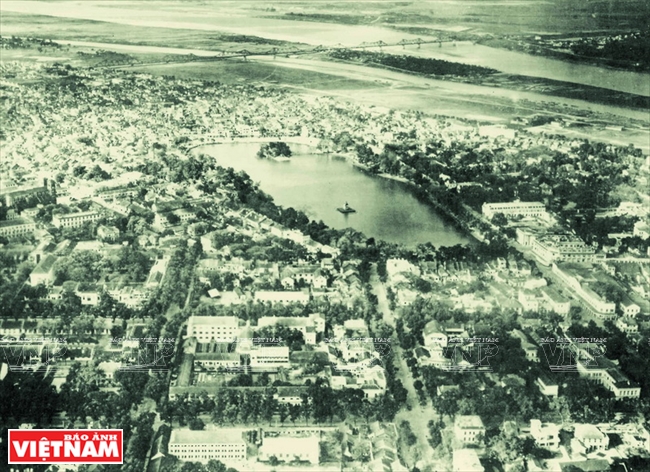 Panoramic view of the Hanoi’s centre with Sword Lake. T he photo was taken from a monitoring plane of France in the 1930s. Photo: File Dong Xuan Market – the largest one in the Hanoi Old Quarter was built during the Nguyen Dynasty (the early 19th century) and rebuilt solidly by the French in 1890. The photo was taken in the 1980s when there were electric trains running through the area. Photo: VNP’s file 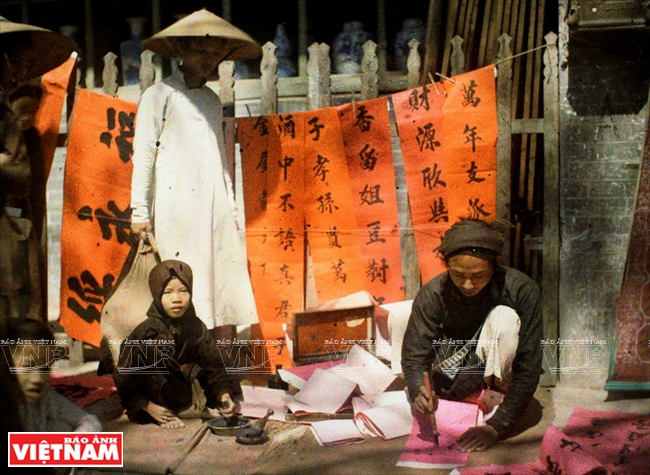 The photo of scholars writing parallel sentences during Tet on a Hanoi street over a century ago. Photo: File  Hang Thiec Street in 1915. Photo: File  Hang Gai Street in the 1915-1917 period. Photo: File |
| Hanoi’s quarter emerged around the 10th century, which strongly developed during the 15th-16th centuries with streets arranged like a chess-board and rows of box houses abutting the other. The entire quarter covers an area of 82ha, lying to the East of Hoang Thanh Thang Long (Thang Long Royal Citadel), now in the areas of 10 wards of Hoan Kiem District. The old quarter was developed under French rule, with 1,586 villas, including 562 private villas currently in use and 1,024 others placed under State ownership. |
Lying along both sides of those streets are box houses one abutting the other and arranged like match boxes, which can be seen now in such streets as Hang Buom, Hang Bac, Hang Ngang and Hang Dao. Houses in ancient quarters are used as residences and concurrently as shops.
In rain or shine, the rows of houses in Hanoi’s ancient quarter always appear small and simple. Red-turned brown-roofed houses stand leaning on each other with roof close to roof and wall close to wall like old lovers for a century, giving rise to a scene so beautiful that it touches the hearts of people.
Under French rule, around the late 19th and early 20th centuries, many changes happened to Hanoi planning, with the emergence of various new quarters characterised by larger and straighter asphalt thoroughfares, underground sewers and public-lighting posts, which are now referred to as old quarters to distinguish them from the ancient quarter. During this period, Hanoi saw many large buildings of French architecture, which were largely public offices or private residences of French officials or their rich Vietnamese collaborators.
Yet, like other cities in the world, Hanoi is not excluded from the historical wheel, having gone through changes in the current process of vigorous urbanisation. It is, therefore, not surprising that though Hanoi is putting on a new image with young, magnificent and modern urban complexes like “European corners inside Hanoi”, it remains ancient, meditative, calm and cool with the ancient quarter and old quarters.
 O Quan Chuong (Quan Chuong Gate) – a historical relic in the Hanoi Old Quarter. Photo: VNP’s file 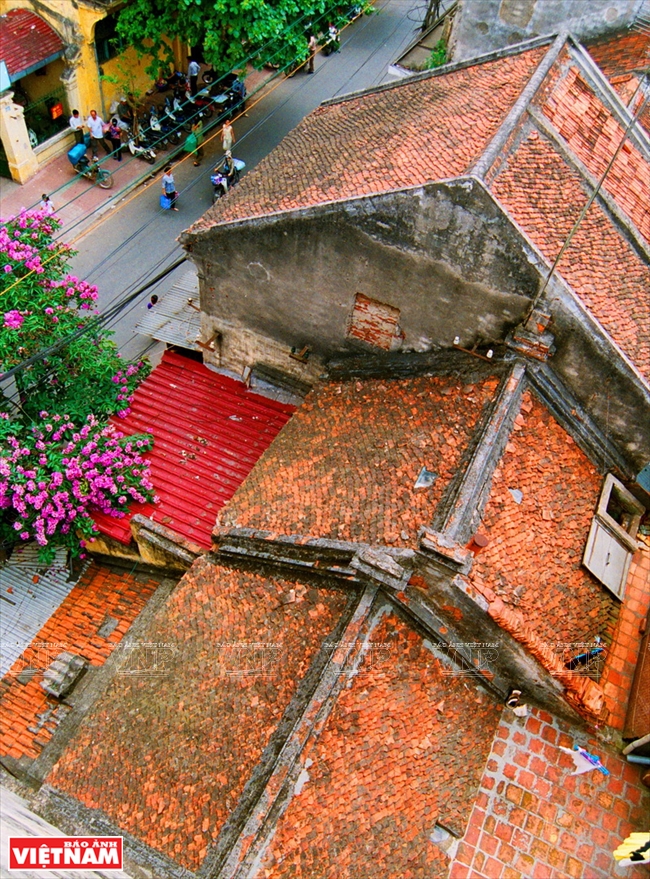 The tile roofs of houses in the Hanoi Old Quarter. Photo: Trong Chinh/VNP 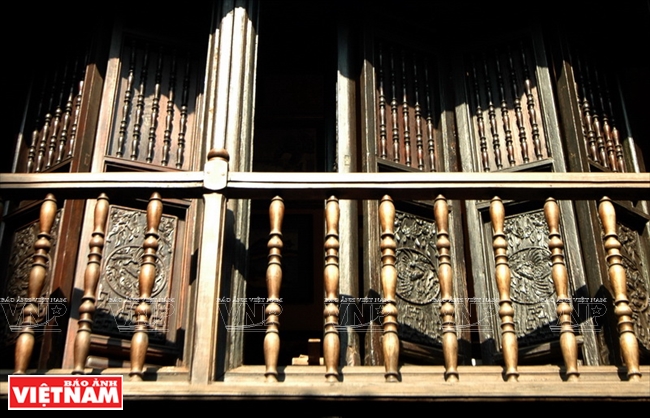 The wooden architecture of a traditional house in the Hanoi Old Quarter. Photo: VNP’s file The imprint of time on old architectural works of Hanoi. Photo: Tran Cong Dat/VNP 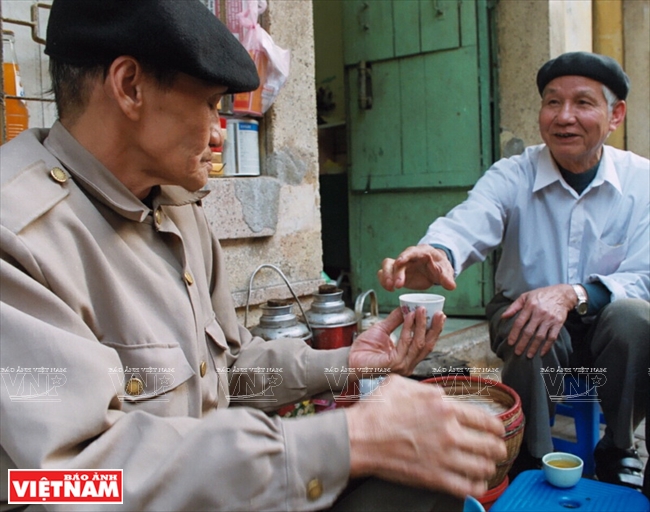 The simple life of Hanoians in the Hanoi Old Quarter. Photo: Trong Chinh/VNP 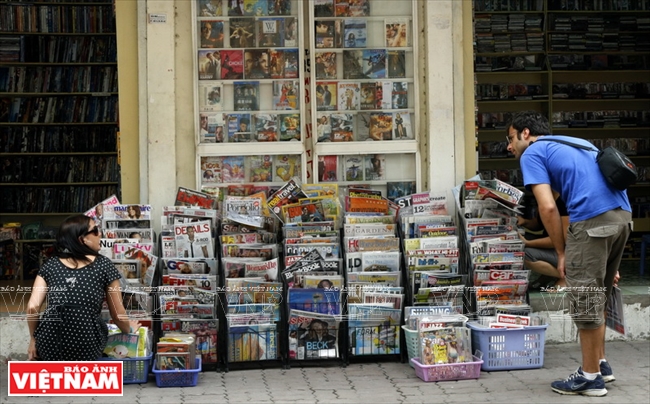 A foreigner looks for foreign magazines on a a roadside shop. Photo: VNP’file 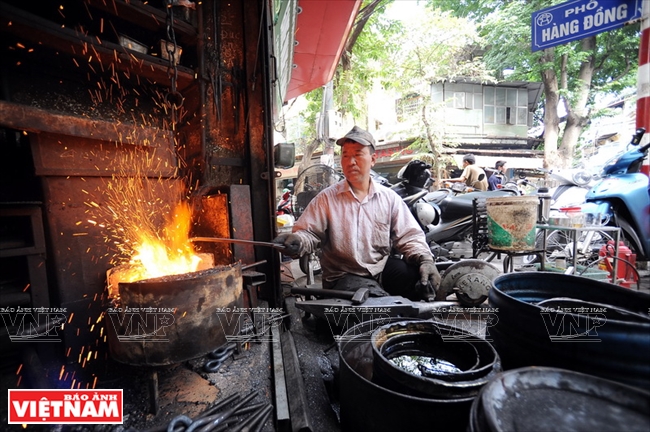 A blacksmith in the Hanoi Old Quarter. Photo: Tran Thanh Giang/VNP |
Resplendent with “Venice towns”
Over a decade ago, Hanoians could hardly imagine, even in their dreams, that Hanoi would be a fast and vigorous development as at present.
About half an hour’s drive from the heart of the Capital city, in suburban areas, once left deserted, now emerge many modern urban centers like miniature European towns in Hanoi, such as Vinhomes Royal City, Vinhomes Times City, Vinhomes Riverside, Ciputra, the Manor and Park City.
With these new urban centres, the population density in Hanoi’s center has been reduced, and inhabitants, particularly younger generations under the influence of a modern lifestyle, are better served with more conveniences in their life.
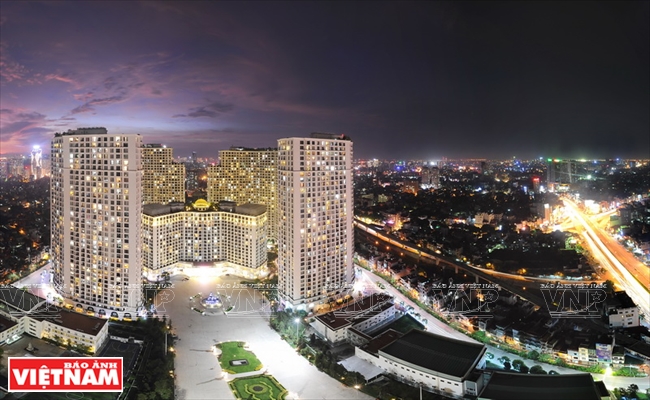 Royal City - a “Miniature of Europe” in Hanoi built in the neoclassical style of European royalty looks brilliant at night. Photo: Tran Thanh Giang/VNP 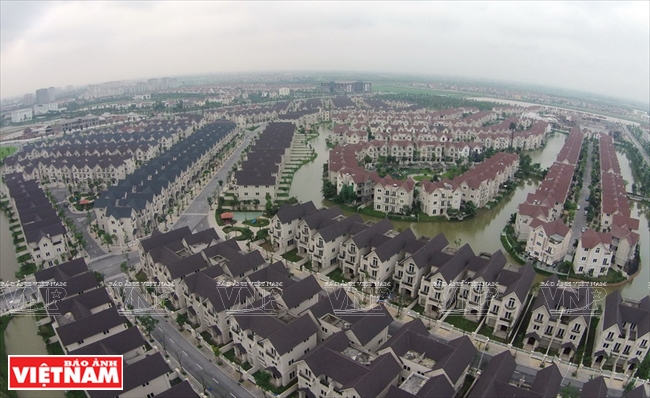 Panoramic view of Vinhomes Riverside looks wonderful with villas located near the green canal. Photo: Le Hieu 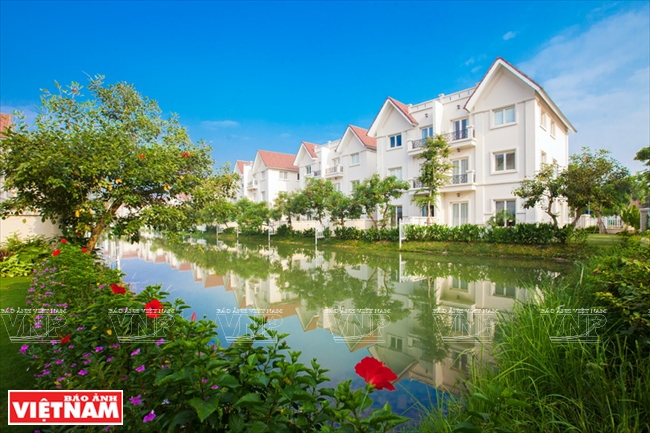 Vinhomes Riverside with the highlight of romantic and eco-architectural style. Photo: Vingoup’file 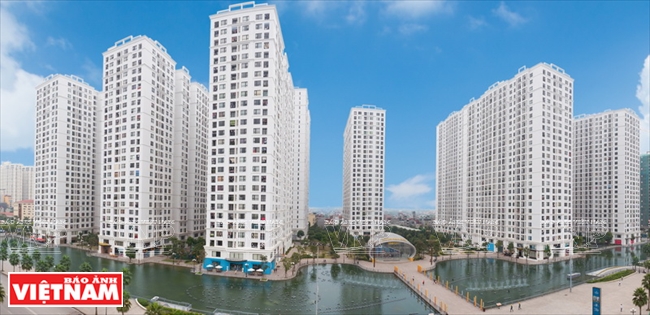 Vinhomes Times City with the modern, dynamic architectural style of Singapore is suitable for young residents. Photo: Vingroup’s file  A community activity of the elders at Vinhomes Times City. Photo: Vingroup’s file |
|
“In its long-term renovation plan, Hanoi will incrementally re-embellish its old urban centres, concentrating on vigorous development of new urban centres in order to create a connecting technical infrastructure, ensuring the synchronous and sustainable development of the Capital. Specifically, special importance will be attached to the development of municipal green space with one million trees and 25 public parks in five years to come, including five parks of international standards”. |
When night falls, Vinhomes Royal City flares up brightly with electric lights, sparkling like a giant group of palaces. Entering the gate which looks like the Triumphal Arch in France, the Royal City complex appears elegant, magnificent, swanky and shining with the neo-classic architectural style of a European Royal Court.
Royal City owns a plaza of nearly 30,000m2 decorated with extremely beautiful large sculptures. Surrounding it are high-rises designed harmoniously with green spaces, swimming pools, playgrounds and vitality-preserving gardens built in a Japanese style. Lying deep underground beneath this giant complex is an extremely modern shopping and entertainment complex with department stores, a water park and a skating rink.
If Royal City is the favorite of neo-classic people, Vinhomes Times City, an urban center lying at the Southeast gate of Hanoi, is very suitable for dynamic and modern youngsters. This is the first urban complex in North Vietnam, built on the basis of the idea of a modern urban center bearing the friendly ecological architectural style of the island state of Singapore, with synchronous infrastructures for residence, healthcare, education, entertainment and recreation, sports and trading.
According to many architectural experts, Times City is an urban model most suitable to the dynamic changing life of Hanoi. Concurrently, it also establishes new living criteria and orientations for a type of modern condominiums as well as the values of community culture. It is not only a place worth living in but also a tourist attraction in Hanoi.
Unlike the two above-mentioned urban centers, Vinhomes Riverside lies at Hanoi’s northeast gate, which is compared to “Venice in Hanoi. Here, the architectural beauty of Venice (Italy) seems to re-appear in a harmonious and subtle manner. Canals, lakes, small green parks surround luxurious and elegant villas, making the whole urban center like a pure and romantic miniature Venice. Therefore, each time when doors are opened in the early morning, Vinhomes Riverside residents can immediately feel the pure and peaceful breath of nature.
It can be said that the development of modern urban conglomerates in Hanoi is an inevitable demand in the process of development of a capital city with a population of more than 7.5 million people at present. The emergence of these urban centers also brings about new inspiring colors for this thousand year-old city.
 Vinschool, a system of international level schools in Vinhomes Times City. Photo: Vingroup’s file Pupils in a library of Vinschool. Photo: Vingroup’s file 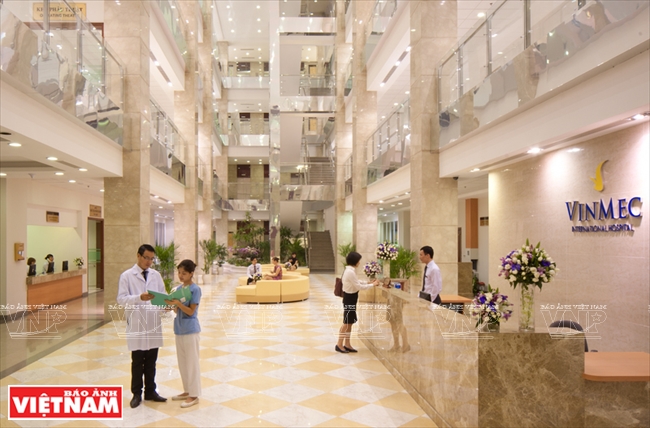 Vinmec Hospital, one of the most modern private hospitals in Vietnam. Photo: Vingroup’s file 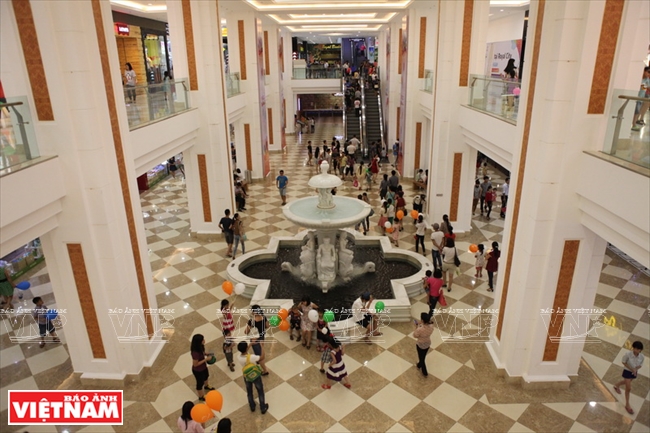 Vincom Mega Mall, an uninterrupted complex for shopping and entertainment in Vinhomes Times City. Photo: Vingroup’s file 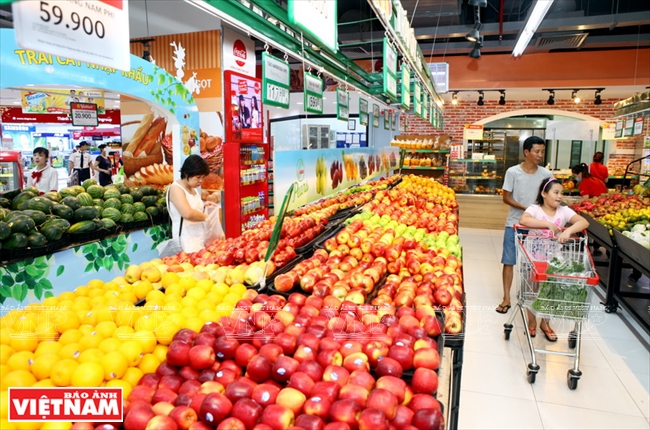 The system of modern supermarkets inside urban areas meets residents’ daily demand. Photo: Tran Thanh Giang/VNP |
Story: Thao Vy - Photos: Tran Thanh Giang, Tran Cong Dat, Le Hieu, Vingroup’s files & VNP’s files


